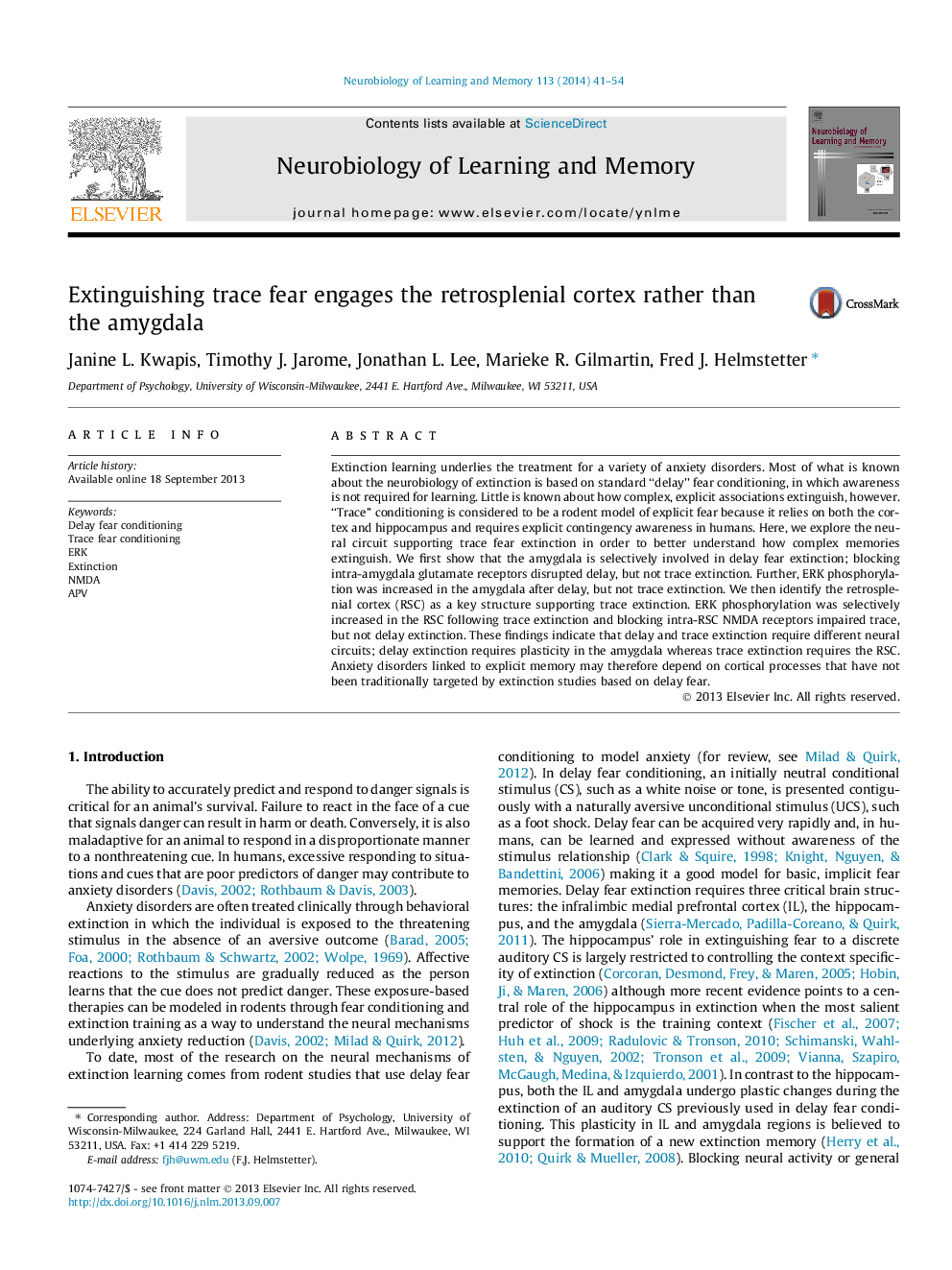| Article ID | Journal | Published Year | Pages | File Type |
|---|---|---|---|---|
| 936540 | Neurobiology of Learning and Memory | 2014 | 14 Pages |
•We test how the neural circuit for trace fear extinction differs from that of delay.•Glutamate receptor blockade in the amygdala impairs delay but not trace extinction•pERK is increased in the RSC and not the amygdala for trace extinction.•Intra-RSC blockade of NMDA receptors impairs trace but not delay extinction.•The RSC, instead of the amygdala, is required for complex trace fear extinction.
Extinction learning underlies the treatment for a variety of anxiety disorders. Most of what is known about the neurobiology of extinction is based on standard “delay” fear conditioning, in which awareness is not required for learning. Little is known about how complex, explicit associations extinguish, however. “Trace” conditioning is considered to be a rodent model of explicit fear because it relies on both the cortex and hippocampus and requires explicit contingency awareness in humans. Here, we explore the neural circuit supporting trace fear extinction in order to better understand how complex memories extinguish. We first show that the amygdala is selectively involved in delay fear extinction; blocking intra-amygdala glutamate receptors disrupted delay, but not trace extinction. Further, ERK phosphorylation was increased in the amygdala after delay, but not trace extinction. We then identify the retrosplenial cortex (RSC) as a key structure supporting trace extinction. ERK phosphorylation was selectively increased in the RSC following trace extinction and blocking intra-RSC NMDA receptors impaired trace, but not delay extinction. These findings indicate that delay and trace extinction require different neural circuits; delay extinction requires plasticity in the amygdala whereas trace extinction requires the RSC. Anxiety disorders linked to explicit memory may therefore depend on cortical processes that have not been traditionally targeted by extinction studies based on delay fear.
